Mercer's White Students and University Integration
by Abby Butt, Paige Koren, Tyler Lawrence, David Loos, and Samir Moussawel
Since the establishment of Mercer University in 1833 by Georgia Baptists, the institution has traditionally adhered to Baptist doctrine regarding academic standards, intra-collegiate conflicts, societal issues, and, more specifically, African Americans’ struggle for racial equality. The historical significance and dramatic influence of the Civil Rights Movement saturates the accounts of integration and racial struggle at Mercer University. Prior to the Movement, however, important notice must be placed upon the endurance and preservation of Baptist and conservative principles throughout the 19th and 20th century and the lasting effect of religious doctrine on Mercer’s application of Christian theological ethics. Through Reconstruction, WWI, and WWII, Baptists set Mercer’s educational and social standards, but the subjective, narrow accounts of racial oppression at Mercer University, namely those concerning Sam Oni, obscure the fundamental tenets of white, Christian theology and supremacist ideologies which predicated racism and intolerance.
The attitudes of mainstream and moderate white are often lost in the memory of the Civil Rights movement, so emphasis must be placed upon the separate perspectives of the integration at Mercer, namely those of white conservative, moderate, and liberal Christian students attending the institution during the Civil Rights Movement. Christian theological interpretations serve as the medium necessary to communicate the alternate attitudes concerning racial discrimination in the post-WWII South as well as the determinants of such attitudes during the Civil Rights era at Mercer University. In order to gain a full understanding of the proposed perspectives of white Mercer University students and their views on the integration of the institution, a factual foundation must be established regarding racial tensions and, most notably, the issue of racism in white moral infrastructures.
Jennifer Harvey writes, “In a society in which the machinations of racism are everywhere, white people are the problem. Said differently, racism is a white problem. People who were white created white supremacy and people who are white sustain it. Our actions, attitudes, and ways of being subvert justice, cross-racial solidarity, and reconciliation. More insidiously, we benefit profusely from the prevalence of racial injustice, even as we are spiritually, psychologically, and morally malformed by it” (3). Simply defined and slightly generalized, the ethical, religious, psychological, cultural, and historical factors of a white racial identity procure a racist ideology, specifically white supremacy, which permeates the Southern mentality of educational and societal segregation.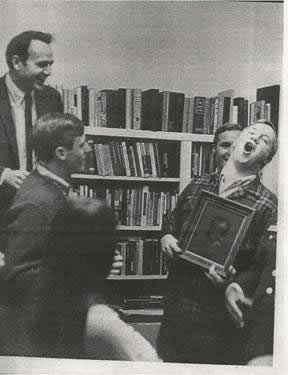 White supremacy predominantly roots itself in “the history of biblical interpretation and the appropriation of the Bible for Christian ethics” (Siker #). The fundamental religious and supremacist aspects of southern ideology manifested themselves in multiple generations, such as the adamant opposing forces during the Civil War and the Civil Rights Movement, as the conditioned environments aimed at conserving the social caste system altered a once definitive moral and ethical complex. Mercer University, as a Southern Baptist institution, would undoubtedly and inadvertently harbor the individuals who established their lives around such beliefs due to the finite religious, political, and legal decrees regarding race.
White supremacy predominantly roots itself in “the history of biblical interpretation and the appropriation of the Bible for Christian ethics” (Siker #). The fundamental religious and supremacist aspects of southern ideology manifested themselves in multiple generations, such as the adamant opposing forces during the Civil War and the Civil Rights Movement, as the conditioned environments aimed at conserving the social caste system altered a once definitive moral and ethical complex. Mercer University, as a Southern Baptist institution, would undoubtedly and inadvertently harbor the individuals who established their lives around such beliefs due to the finite religious, political, and legal decrees regarding race.The Plessy v. Ferguson court case argued on April 13, 1896 established the legal precedents of white supremacy in almost all aspects of the real world. White supremacy, as a justified and acceptable practice, could legally confine educational and social boundaries. In order to guarantee the endurance of the principle and justify the limits of its implications in educational standards, namely Mercer’s regulations on racial restraints, proponents of the case required thorough definitions of the judgment. Through complex and slightly incomprehensible means, the United States Supreme Court defined white supremacy as entirely acceptable and thoroughly justified. The precedent set by this court case enforced the Southern perspective of a white supremacist infrastructure, and subverted any means of cultural progression due to the conditioning process through religious reinforcement of defined law. The Brown et al. v. Board of Education of Topeka, Kansas et al. usurped the Southern ideology of white supremacy and absolutely established a beginning to the Civil Rights Movement in the nation. The limitations of the Brown v. BOE case and its effects on Mercer University manifested themselves in two words: public education. Mercer, as a private institution, held all legal rights and governance policies regarding racial integration within its geographical and educational boundaries. From a broad perspective, the Brown v. BOE case altered the educational and social landscape of the nation by declaring religiously and legally enforced segregation as an unconstitutional practice.
Mercer’s integration in 1963 derived action from factors which remain vague and obscure in the subjective, authentic accounts of Sam Oni, but further analysis of separate perspective supplies fresh insight on white affectivity towards racism at the institution.Sam Oni’s personal account of Mercer University’s integration gives a single perspective. William Campbell’s The Stem of Jesse “is an account of the integration of Mercer University in Macon, GA, in 1963, and of the refusal of a local Southern Baptist church to accept the school's first black student. [It] is an effort to understand the civil rights conflict through a single case” (Wilkie). From Sam Oni’s viewpoint, readers gain an enlightening, yet narrow, understanding of the integration at Mercer. However, the alternate perspectives of three white students, James Nixon Butt IV, Michael Chapline, and Roger Poston, who attended Mercer at separate periods offer recollections that illustrate the views of conservative, moderate, and liberal Southern ideologies at a Baptist institution for higher learning.
“Common to the time, I had a bias against integration,” one of the white alumni recalls. “I embraced equality and everything that goes with it, but the rhetoric was insufferable. Having grown up around many black people, I understood their problems but at a white person could not really identify with those problems. The teachers who seemed to dwell on integration spent more time on that than they did their subjects. I had a Psychology professor who was obsessed with integration and civil rights. The pressure to embrace her ideals was great and anyone who looked too ‘preppy’ was discounted as either a racist or border-line racist. I resented that. If the environment had been more ‘tolerant’ natural curiosity would have resolved this issues. Given the emphasis on integration and Civil Rights, nothing much was accomplished. I suppose that is human nature--to push back” (alumni interview).
The white alumni's oral history offers insight into the issues at Mercer from 1966 to 1969. He addresses the issues of conservatism and liberalism and their battle for influence at Mercer University after its voluntary integration in 1963. From a conservative mindset, preservation of the social and educational standards prior to the Brown v. BOE judgment remained a paramount factor for opposing the invasive integration policies. Southern Baptists theology lay at the root of most conservative perspectives and enduring influence remains regarding Biblical interpretations Christian theological ethics.
Nancy Tatom Ammerman describes research on the relationship between Christian beliefs and racial ideology in Baptist Battles: Social Change and Religious Conflict in the Southern Baptist Convention. “We asked our panel of Southern Baptist local church leaders a variety of questions about modernity. We found all of them, regardless of theological party, remarkably unwilling to say that religion has no effect on their work, their politics, or their family life. If religion has become differentiated into a ‘private’ sphere, these Baptists were unwilling to admit it. But on questions of change and diversity, there was wide variation among them. Most acknowledged these as facts of their lives, but some did so with more enthusiasm than others. Among the statements to which we asked them to respond were:
-Public schools are needed to teach children to get along with lots of different kinds of people.
-I like living in a community with lots of different kinds of people.
-I sometimes learn about God from friends in other faiths.
-One of the most important things children can learn is how to deal creatively with change.
-Children today need to be exposed to a variety of educational and cultural offerings so they can make informed choices.
These five items together formed a measure of acceptance of the diversity and change that characterize modern life” (Ammerman). As a psychological study of a distinct human trait, this study, conducted in 1968, illustrated the variance in conservative, moderate, and liberal opinions about accepted cultural diversity. The results indicated how theological association within the Southern Baptist community affected perspectives on modern social issues, namely racial tensions and cultural pluralism.
“Change would not come easily-to the South as a region or to the denomination that had been its religious establishment,” she explains. “The years of the civil rights struggle were tumultuous for Southern Baptists. Just as surely as there were Southerners who saw the justice of integration, there were many more who reacted with determine, deeply-felt, opposition to what seemed like outside tampering with Southern ways of living…For every church that opened its doors to blacks, many more enacted new membership and seating rules designed to prevent any breach of segregation. In some cases churches split over the issue, with a small minority of integrationists either forming a new fellowship or being left with a virtually empty church. For many Southern whites it was a time to reassert the fundamental rightness of the ‘anglo-saxon evangelical faith’” (Ammerman).
Religion as a metaphorical battleground for racial justice and injustice epitomized the moral and ethical ambiguities felt by both white and black Mercer students attempting to adhere to the changing social mores. “The battles between integrationists and segregationists in the South were fought in thousands of public and private arenas. Sometimes they were precipitated by an invitation to an African American to speak in chapel, or to attend a Friday night student group. But each event caused soul-searching, argument, compromise, or confrontation. Sometimes public protest was involved, but more often behind-the-scenes negotiation averted public scenes. Individual Southern Baptists changed their own minds and sometimes the minds of their friends. But just as often, the courageous ministers and teachers who welcomed blacks into homes and churches were subject to abuse and alienation, even threats of death, at the hands of their fellow Baptists” (Ammerman).
Southern Baptist theology at Mercer University constantly endured bombardment from the rapidly changing social standards around them. Clinging to conservative principles, many Southern Christians resisted an invasive and drastically progressive policy of integration. Some religious white Southerners saw the Civil Rights Movement as something to be conquered and integrated into their personal perspective, however warped the ideology may become. By simultaneously embracing and rejecting fundamental interpretations of Christian theological ethics, Southern Baptists allowed racism and faith to co-exist.
Given the white Southern Baptist theological interpretation regarding ethical principles, important notice must be placed on how the foundational beliefs of the conservative Southern Christian affect separate approaches to the issue of integration. The political implementations on educational regulations concerning integration and tolerance assert ambiguity in the effectiveness of education as a catalyst for progressive cooperation. Judicial and political authorities believed educational solutions, specifically the remedies to integration taught in public schools and institutions of higher learning, provided an absolute and righteous means to which the integration issue could be easily combated. In 1961, as schools were beginning to integrate, President Kennedy said, “The peaceful integration of many schools in the South and Southwest yesterday and today, following similar developments in Atlanta last week, is a dramatic demonstration of the progress that the United States is making in improving the position of Negroes in our society. The important thing is that there is progress and that law and order and dignity have prevailed” (Kennedy).
In spite of this optimism about progress, many Americans continued to oppose integration. White opposition took on a wide range of forms including efforts aimed not just towards blacks but also towards the moderate whites. One year after the decision in Brown v. Board of Education, one hundred Southern congressmen signed the “Southern Manifesto,” attacking the Supreme Court and assuring their refusal with its decision. Political and business leaders organized White Citizens' Councils (WCC) all over the South, beginning in Mississippi. Politicians used all of their power to resist the Civil Rights Movement. Within a few months of the first Council, the WCC integrated many new members and chapters throughout the South. Members of the WCC, also referred to as “The Guild,” subverted progressive social movements by withholding loans, forcing foreclosure on home due to excluded mortgages, and dismissing workers. A National Citizens' Council of America along with state and local groups organized these endeavors, and it frequently had the support of business, communal, and religious leaders. White resistance also manifested in extensive violence and death threats with the purpose of instilling fear in the minds of the more liberal minded people. The white supremacist ideology rooted racist convictions in groups such as the Ku Klux Klan and local police services. They believed that integration would destroy the black and white races. Unlike the Ku Klux Klan, the WCC met openly and was seen by many as being respectable. In most communities there was little if any shame that came with being a member of the WCC. Its strategies did not usually entail direct violence or terrorist acts, but utilized their capabilities for economic retaliation. As an influential and established mechanism for the opposition, white resistance clashed with increasing intensity as moderate and progressive mindsets gave rise to tolerance and acceptance of African Americans as equals. Racially conservative whites put pressure on institutions taking proactive steps toward integration.
A white Mercer alumnus says that tension on campus among the students were generally muted: “I do recall integration at Mercer and, as such, had no problem with it. However, I do recall a certain amount of reverse discrimination in favor of the black students that seemed unfair to many white students. Funded functions including food and entertainment were provided especially for the black students and a number of them seemed to be better off financially due to the special treatment they were accorded than many of the non-black students” (white alumni interview). While no animosity or bitter feelings are implied by this statement, the obvious potential for a more sinister transition at Mercer during the Civil Rights era indicates the magnitude to which Southerners confided in their Christian ethical and moral principles to moderate, tolerate, and eventually accept African Americans as their equals. Martin Luther King, Jr., proposed the issue with moderates as a stumbling block for African American progression in improving social and educational standards, but Mercer, being fundamentally driven by Baptist tenets and Christian theology, had few if any influential moderates on the integration issue: authoritative figures generally stood on either the conservative or liberal end of the spectrum concerning racism and pluralism.
Moving away from the finite conservatism, moderate perspectives regarding racial tensions gave rise to more conditional ways of dealing with social issues while simultaneously exhibiting a reserved conviction. Mercer began a program intended to prepare black students for the transition to a white institution.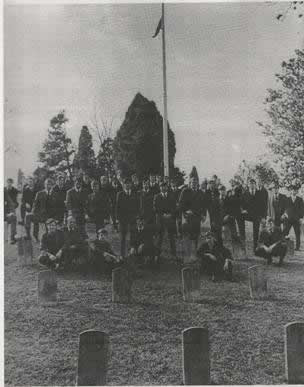 P. Harris Anderson described the program as fundamentally Christian, “There exists no better way to break the poverty cycle than to help such young people get on their feet so they may contribute to society rather than be dependent upon it. This is desperately needed in this area. This program manifests as fine a spirit and purpose of Christian charity as can be found” (Anderson). The program he refers to is the Upward Bound initiative at Mercer University. The program was a progressive action directed at integrating capable, yet financially unfortunate, high school students, both black and white, into the realm of higher learning institutions. While the government lacked any ability to influence private institutional regulations of integration, Mercer University’s administration brought about integration on their own.
P. Harris Anderson described the program as fundamentally Christian, “There exists no better way to break the poverty cycle than to help such young people get on their feet so they may contribute to society rather than be dependent upon it. This is desperately needed in this area. This program manifests as fine a spirit and purpose of Christian charity as can be found” (Anderson). The program he refers to is the Upward Bound initiative at Mercer University. The program was a progressive action directed at integrating capable, yet financially unfortunate, high school students, both black and white, into the realm of higher learning institutions. While the government lacked any ability to influence private institutional regulations of integration, Mercer University’s administration brought about integration on their own.
In Beyond Atlanta: The Struggle for Racial Equality in Georgia, 1940-1980, Stephen Tuck describes the changes taking place at Mercer as momentous, at least in the University’s official memory. “In January 1994, thirty years on the other side of the civil rights revolution, [Macon’s] largest institution of higher learning, Mercer University, commemorated the arrival of its first students of color. At a Founder’s Day convocation, the Mercer community both repented of the racial sins of a formerly segregated South and gloried in its status as the first Georgia university to lower its racial bars voluntarily and without a court order. In his introductory remarks, Mercer president R. Kirby Godsey lauded his predecessor, Rufus C. Harris, who ‘challenged the prevailing order and placed moral conviction above cultural expectation’ by admitting these students. Godsey continued: ‘No passing of time, no future episodes can ever eclipse the significance of their coming to this place…they enabled this University to build a new tradition…Sam Oni, Bennie Stephens and Cecil Dewberry made Mercer University a different and better University for every student, black or white, Hispanic, or Asian, or American who will ever attend one class here…They are the founders of Mercer University” (Tuck).
In the 1960s, however, the response was not so celebratory. Harris’s actions raised awareness of the issue of integration at Mercer, but the conservative backlash to progressive policies produced indifference and an intense animosity towards the African American struggle for equality. “Dr. Rufus Harris of Macon, president of Mercer University, said in an Atlanta speech that the need to correct the educational system in the South is particularly great because Southerners have for so many years concentrated energies on racial problems to the exclusion of all else. He called for political leaders less chained by the restrictions of sectionalism, with ‘less idolatry of ancient political images and less manifest ninnyisms’” (Parham).
 Harris maintained that the integration of Mercer University “increased the likelihood of racial cooperation in towns across Georgia. In Macon, Mercer certainly led the way toward desegregation” (Tuck). Progressive policies and moderate to liberal advocates established a foundation for the Civil Rights Movement at Mercer University, but moderation implies inhibition on part of the liberals, and the Tattnall Square Baptist Church controversy provided insight into the racial tensions on the Mercer Campus.
Harris maintained that the integration of Mercer University “increased the likelihood of racial cooperation in towns across Georgia. In Macon, Mercer certainly led the way toward desegregation” (Tuck). Progressive policies and moderate to liberal advocates established a foundation for the Civil Rights Movement at Mercer University, but moderation implies inhibition on part of the liberals, and the Tattnall Square Baptist Church controversy provided insight into the racial tensions on the Mercer Campus.
Integrating the church was a special point of contention. Records in the Mercer University archives document: “Tattnall Square Baptist Church was the campus church of Mercer University. Land for the church had been given by the university to the congregation in the early days of the school. Sam Oni, a Baptist convert from Ghana, integrated Mercer University along with two Macon African Americans in the fall of 1963. When Oni arrived in Macon, he was discouraged from attempting to join Tattnall Square Baptist Church as the membership had made it known they would not accept him. Oni's membership in Vineville Baptist Church was also initially contested. He was finally admitted to join the Vineville congregation because he was a foreigner from Africa and 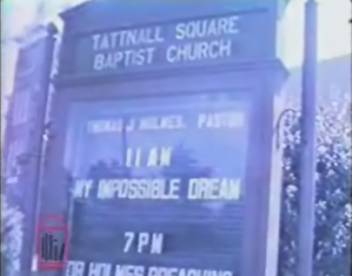 not an African American. In June 1966, two African Americans attended services one Sunday at Tattnall Square Baptist Church. Afterwards, the church voted not to permit African Americans to attend their services. Oni, who spent the summer in California, felt compelled to attempt to become affiliated with the church during his last year at Mercer. On September 25, 1966, Oni tried to attend Sunday service. He was met at the door by two deacons who wrestled him away from the church and into a waiting police car. Inside the church, the congregation voted to fire Pastor Holmes, the assistant pastor, and the church's music director because of their support for integrating the church. Oni tried again to attend Tattnall Square Baptist Church on October 2 and was again rejected; after his second rejection, he announced he would not try again. The church eventually gave up the university land and moved to a new location outside of town. They continued to maintain a white-only congregation for several years. Dr. Holmes, following his dismissal, was rehired as an assistant to a Mercer University administrator, a position he had held before he became pastor at Tattnall Square Baptist Church” (Oni, Sam, and Thomas J. Holmes).
not an African American. In June 1966, two African Americans attended services one Sunday at Tattnall Square Baptist Church. Afterwards, the church voted not to permit African Americans to attend their services. Oni, who spent the summer in California, felt compelled to attempt to become affiliated with the church during his last year at Mercer. On September 25, 1966, Oni tried to attend Sunday service. He was met at the door by two deacons who wrestled him away from the church and into a waiting police car. Inside the church, the congregation voted to fire Pastor Holmes, the assistant pastor, and the church's music director because of their support for integrating the church. Oni tried again to attend Tattnall Square Baptist Church on October 2 and was again rejected; after his second rejection, he announced he would not try again. The church eventually gave up the university land and moved to a new location outside of town. They continued to maintain a white-only congregation for several years. Dr. Holmes, following his dismissal, was rehired as an assistant to a Mercer University administrator, a position he had held before he became pastor at Tattnall Square Baptist Church” (Oni, Sam, and Thomas J. Holmes).
This recollection of the events sums up the controversy, but the religious and political implications only surfaced after the Southern Baptist Convention formally addressed the issue.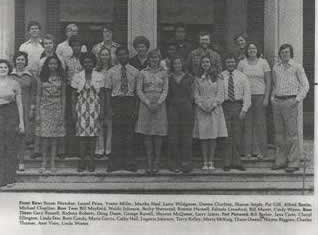
“Having affirmed adherence to the cherished Baptist principle of the autonomy of the local church, Baptists prayerfully express concern about the issues faced by the ministers and congregation of the Tattnall Square Church. It is well that in humility we recognize that we have not been successful in dealing with some of the most difficult social problems of our time. We affirm the universality of the gospel and the brotherhood of believers” (Garrison). White Southern Baptists classified the controversy as a product of Sam Oni’s attempt to integrate the church, and it illustrated the moral and ethical ambiguities of the church, its doctrine, and the authoritative influence it held over the congregation and the campus.
Oni’s experience and the lasting memory of that churches actions reverberated throughout Mercer’s history by highlighting the situations of unjust Christian theological ethics and the alterations of Baptist principles. A white alumnus says, “While I was at Mercer the Tattnall Square Baptist Church was located on campus next to the chapel. The church had the reputation of not allowing blacks (including students) to attend. The church had been there for many years and leased the building from the university. When the lease expired around 1976 the university did not renew it. The building became the speech and communications department. I don’t know if the administration didn’t renew the lease because of the church’s racial intolerance or if they just needed another building. Either way, it removed a symbol of racial intolerance from campus” white alumni interview).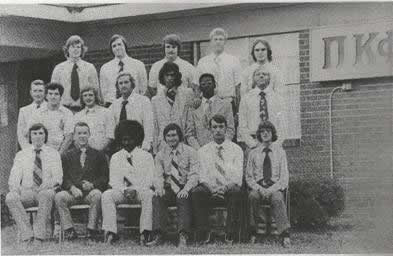 White students, conservative, moderate, or liberal alike, viewed integration as a necessary step in granting equal rights.
White students, conservative, moderate, or liberal alike, viewed integration as a necessary step in granting equal rights.
By liberally redefining the Civil Rights Movement in terms of basic human rights, white Southerners embraced a righteous ethical infrastructure which indicates the initial views and progression since the integration at Mercer University in 1963. Educational, social, and religious mores changed drastically in the post-Civil Rights era as Southerners reexamined their fundamental beliefs of ethical and moral standards. Simply stated “the challenge for evangelical Christians is simply to try to remember how to be Christians again, even while we remain engaged with the public life of our nation” (Gushee) “There were times that many white students at Mercer felt that we were not as important as the bohemian types, at the time known as hippies, or the minority students” (white alumni interview). The Civil Rights Movements at Mercer University promoted the necessity for balance between the students.
As white opposition, progressive policy-making, and human rights redefined the student body of Mercer and forced the Southern community as a whole to cultivate new fundamental beliefs, radical conservatism and liberalism found an equilibrium state in the Mercer community. President R. Kirby Godsey said, “No passing of time, no future episodes can ever eclipse the significance of their coming to this place…they enabled this University to build a new tradition…Sam Oni, Bennie Stephens and Cecil Dewberry made Mercer University a different and better University for every student, black or white, Hispanic, or Asian, or American who will ever attend one class here…They are the founders of Mercer University” (Tuck).
Works Cited
Ammerman, Nancy Tatom. Baptist Battles: Social Change and Religious Conflict in the Southern Baptist Convention. New Brunswick and London: Rutgers University Press, 1990.
Anderson, P. Harris. "Mercer Insights." Christian Index 29 Sept. 1966: 7.
Brown et al. v. Board of Education of Topeka et al. No. 1. Supreme Court of the United States. 17 May 1954. History Reference Center. EBSCO. Mercer University, Macon, GA. 1 May 2009. http://web.lexis-nexis.com/universe.
Interview with white alumni. E-mail interview. 22 Apr. 2009.
Fisher, Ben C. "Small Christian Schools Will Always Be Needed." Christian Index 22 Sept. 1966: 4.
Garrison, Searcy S. "Macon Church Needs Our Prayers." Christian Index 13 Oct. 1966: 4.
Grady-Willis, Winston A. "Challenging U.S. Apartheid: Atlanta and Black Struggles for Human Rights, 1960-1977." Georgia Historical Quarterly (2006): 288. History Reference Center. EBSCO. Mercer University, Macon, GA. 1 May 2009. http://search.ebscohost.com/.
Gushee, David P. "Evangelicals and Politics: A Rethinking." Journal of Law and Religion 23 (2006): 13-14. History Reference Center. EBSCO. Mercer University, Macon, GA. 1 May 2009. http://search.ebscohost.com/.
"Harris Denies Federal Controls." Christian Index 6 Oct. 1966: 5.
Harvey, Jennifer. Whiteness and Morality: Pursuing Racial Justice Through Reparations and Sovereignty. New York City, NY: Palgrave Macmillan, 2007. History and Humanities. 2009. ebrary. 1 May 2009. http://www.ebrary.com/.
Kennedy, John F. "352 Statement by the President on the Peaceful Integration of Schools in the South and Southwest." 6 Sept. 1961. Public Papers of the Presidents of the United States, John F. Kennedy, 1961. Washington, D.C: Western Standard Publishing Company, 2001. 591. History Reference Center. EBSCO. Mercer University, Macon, GA. 1 May 2009. http://search.ebscohost.com/.
Manis, Andrew M. Macon Black and White: An Unutterable Separation in the American Century. Macon. GA: Mercer University Press, 2004.
Moltmann, Jurgen. On Human Dignity: Political Theology and Ethics. Trans. M. Douglas Meeks. Philadelphia: Fortress Press, 1984.
Oni, Sam, and Thomas J. Holmes. "WSB-TV newsfilm clip of comments by Sam Oni and Dr. Thomas Holmes following the decision of Tattnall Square Baptist Church to remain segregated and to dismiss Dr. Holmes as their pastor, Macon, Georgia, 1966 September 26." WSB-TV. Atlanta, GA. 26 Sept. 1966. Transcript. The Digital Library of Georgia. Ed. Civil Rights Digital Library. 2009. GALILEO Initiative. 1 May 2009. http://dlg.galileo.usg.edu/crdl/id:ugabma_wsbn_50156.
Parham, Joseph B. "Georgia Education Assembly." Southern School News [Nashville, TN] Apr. 1965: 7.
Plessy v. Ferguson. No. 210. Supreme Court of the United States. 13 Apr. 1896. History Reference Center. EBSCO. Mercer University, Macon, GA. 1 May 2009. http://search.ebscohost.com/.
Schleitwiler, Vincent J. "Into a Burning House: Representing Segregation's Death." African American Review 42.1 (2008): 149-162. History Reference Center. EBSCO. Mercer University, Macon, GA. 1 May 2009. http://search.ebscohost.com/.
Siker, Jeffry S. Scripture and Ethics: Twentieth-Century Portraits. New York City, NY: Oxford University Press, Incorporated , 1996. History and Humanities. 2009. ebrary. 1 May 2009. http://www.ebrary.com/.
Straton, John Roach. "Will Education Solve the Race Problem?" The North American Review 170.523(1900): 785-802. Making of America. 2005. Cornell University Library. 1 May 2009. http://cdl.library.cornell.edu/cgi-bin/moa/moa-cgi?notisid=ABQ7578-170&byte=114465541.
Tuck, Stephen. Beyond Atlanta: The Struggle for Racial Equality in Georgia, 1940-1980. Athens and London: The University of Georgia Press, 2001.
Wilkie, Curtis. "At age 71, still a renegade; Will Campbell, provocateur, writer and former minister, focuses on race and the South." The Boston Globe 17 July 1995, NATIONAL/FOREIGN sec.: 3. LexisNexis Academic. LexisNexis. Mercer University, Macon, GA. 1 May 2009. http://web.lexis-nexis.com/universe.